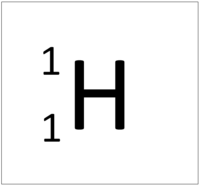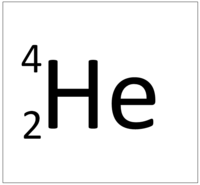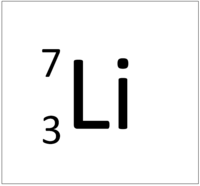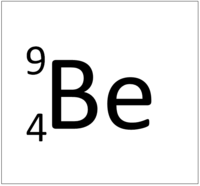Difference between revisions of "Neutron"
| Line 40: | Line 40: | ||
Number of [[neutron]]s = 4 | Number of [[neutron]]s = 4 | ||
| − | | style="height:20px; width:200px; text-align:left;" |This [[atom]] has an [[Atomic Number]] (Z) of | + | | style="height:20px; width:200px; text-align:left;" |This [[atom]] has an [[Atomic Number]] (Z) of 4 and a [[Relative Atomic Mass]] (A) of 9. |
Number of [[neutron]]s = A - Z | Number of [[neutron]]s = A - Z | ||
| − | Number of [[neutron]]s = | + | Number of [[neutron]]s = 9 - 4 |
| − | Number of [[neutron]]s = | + | Number of [[neutron]]s = 5 |
|} | |} | ||
Revision as of 14:28, 26 November 2018
Key Stage 4
Meaning
The Neutron is a neutral particle found in the nucleus of an atom.
About Neutrons
- Neutrons are a type of nucleon.
- Neutrons have a relative atomic charge of 0 and a relative atomic mass of 1.
- The number of neutrons in an atom can be found subtracting the Atomic Number from the Relative Atomic Mass.
| Hydrogen | Helium | Lithium | Beryllium |
| This atom has an Atomic Number (Z) of 1 and a Relative Atomic Mass (A) of 1.
Number of neutrons = A - Z Number of neutrons = 1 - 1 Number of neutrons = 0 |
This atom has an Atomic Number (Z) of 2 and a Relative Atomic Mass (A) of 4.
Number of neutrons = A - Z Number of neutrons = 4 - 2 Number of neutrons = 2 |
This atom has an Atomic Number (Z) of 3 and a Relative Atomic Mass (A) of 7.
Number of neutrons = A - Z Number of neutrons = 7 - 3 Number of neutrons = 4 |
This atom has an Atomic Number (Z) of 4 and a Relative Atomic Mass (A) of 9.
Number of neutrons = A - Z Number of neutrons = 9 - 4 Number of neutrons = 5 |



